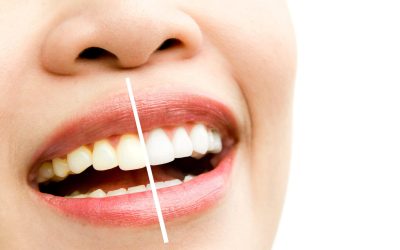Confused about which treatment is better: veneers or bonding for a brighter and beautiful smile? Well, both treatments are used to repair chips, cracks, discoloration, and uneven teeth. But they vary in the way they are carried out, the duration of the treatment, and the cost of doing them.
Here in this blog, we will simply discuss Veneers vs bonding in normal language so you can know the exact difference and make an informed decision- which one fits your smile and lifestyle. Let’s go!
What is Dental Bonding?
Dental bonding is a fast, less invasive, and inexpensive method of improving your smile. Your dentist applies the tooth-colored resin directly on the tooth and shapes the resin with the special light, and allows it to harden. The result? A smooth, natural finish that blends seamlessly with your smile.
Dental bonding has become a popular method of fixing chipped teeth as it is an easy, painless procedure that is finished in a single visit.
Bonding tends to vary between $150 – $400 each tooth, depending on the difficulty of the job. Confirm the full bonding details and pricing for a more accurate estimate.
What are Veneers?
Veneers are thin outer shells made of porcelain material. These are bonded on the front side of your teeth. They are tailor-made to fit over your smile color, shape, and everything.
Porcelain Veneers are particularly popular as they appear to be much more natural and resist stains much less than natural enamel. They are made to suit numerous years and are best suited to an individual who wants to revamp his or her smile completely.
Typically, veneers need two or three dentist visits. Nevertheless, there are clinics that provide same-day treatments.
Porcelain veneers generally cost $800 to $2500 per tooth, but they deliver a fantastic cosmetic outcome that lasts well and is difficult to match in the long run.
Bonding vs veneers: Know the Real difference!
Both veneers and bonding dramatically improve your smile. But they do in different ways.
Dental Bonding uses composite resin, which is a soft substance that is molded directly onto your tooth. It is used in making fast repairs and does not involve peeling off much of your enamel. Bonding is also very natural and appealing, like other fittings, though it is more prone to staining and wear over time.
However, veneers use extremely thin shells of porcelain which gets bonded onto your teeth permanently. Porcelain is stronger and less porous, so it lasts longer, is stain-resistant, and gives a brighter finish. But installing veneers normally requires a slight enamel removal to create space on the surface; thus, the process is more permanent than bonding.
When it comes to Veneers vs Bonding durability, veneers obviously win. Although the bonding would have a life span of 4 to 8 years, well-maintained veneers can have a life span of 10 to 20 years. Bonding is a fantastic short-term solution, whereas veneers are worth the price in the case of long-term perfection.
Pros and Cons of Dental Bonding
Pros:
- Affordable & fast- done in one visit.
- Painless and does not need much or any removal of enamel.
- Perfect on small chips or small cracks.
Cons:
- Easier to be dirty after some time (coffee and wine lovers, I will warn you!).
- Not as tough as veneers–can crack on biting hard stuff.
- Shorter lifespan than veneers.
Dental bonding is best when one wants a quick and inexpensive solution or when he or she is trying out cosmetic enhancement before making anything permanent.
Pros and Cons of Veneers
Pros:
- Durable performance using porcelain, which is hard and resistant to stains.
- Custom-made to fit your smile perfectly.
- Provides an entire smile renovation that appears natural and bright.
Cons:
- More expensive upfront.
- Irreversible because a thin layer of enamel is lost.
- Takes a few visits or two unless you have gone with same-day veneer services.
Veneers are the most appropriate choice for individuals who desire to have long long-lasting, perfect smile and who are not worried about spending money.
Bonding vs. Veneers: Which one is better?
It is basically based on what you require and the duration you wish your outcomes to be.
If all you want is to repair a small chip or a space between teeth, dental bonding is fast, cheap, and it looks good. It is an excellent alternative when trying the waters before making a permanent choice of treatment.
However, when you are dreaming about having a picture-perfect smile that will last 15 or more years, then veneers are the obvious winner. They have excellent strength, resist stains, and a smooth and glossy surface that does not fade.
A lot of individuals start with bonding to have a feel of their desired smile and then progress to veneers at the time that they are willing to make a long-term investment.
Veneers vs Bonding Maintenance and Durability
Veneers require less maintenance in the long run. They resist stains and hardly require repairing, unlike bonding, which might require touch-ups after a few years. Nevertheless, good oral health is an advantage to both treatments: twice a day brushing, and using floss.
With proper oral cleanliness, your dentist may prolong either of the two.
Smile Transformations: The Confidence Factor
Bonding and veneers will make magic out of you as well. A simple chip repair will give you a polished and professional-looking smile, or veneers will do a complete overhaul for you. If you want to know what can be done, see real smile transformations before deciding. And you will be amazed by how minor changes may bring such a massive difference!
FAQ
Is dental bonding more affordable than veneers?
Yes. The cost of dental bonding is far cheaper on a per-tooth basis and is a great option to make minor changes without losing money.
Is dental bonding as long-lasting as veneers?
Not quite. Veneers have a life span of 10-20 years, and bonding requires 4-8 years under good care.
Does dental bonding appear as good as veneers?
No, at least not immediately after treatment. However, as time passes, veneers become colorful and shinier than bonding.
Do dental bonding stains more than veneers?
Yes, bonding material is porous and can stain coffee or wine. Whereas porcelain Veneers are less prone to discoloration.
Final Thoughts
Dental bonding and veneers are both great means of improving your smile; it is just a question of what you want to achieve, how quickly, and how much you have to spend. Bonding is suitable for fast, small repairs, and it is not very expensive. Veneers are more permanent, and are more up-market, and can dramatically make you feel better about your smile.




